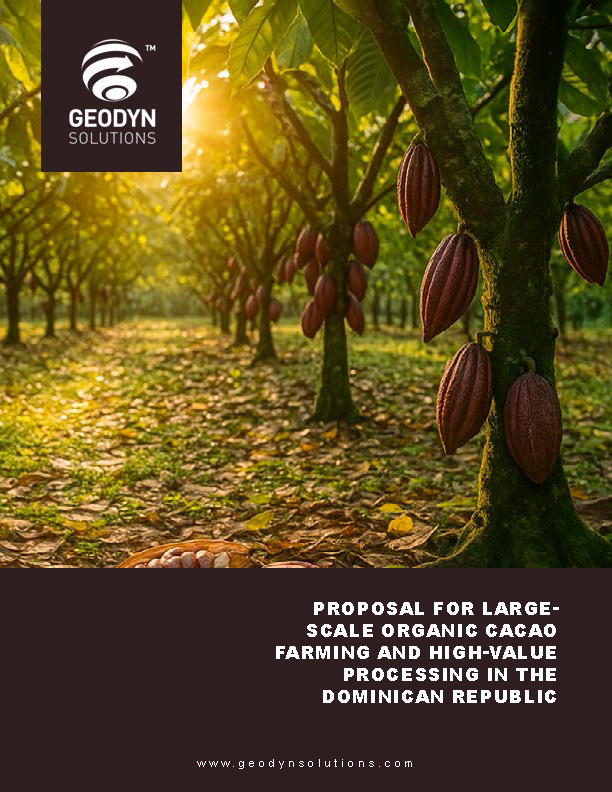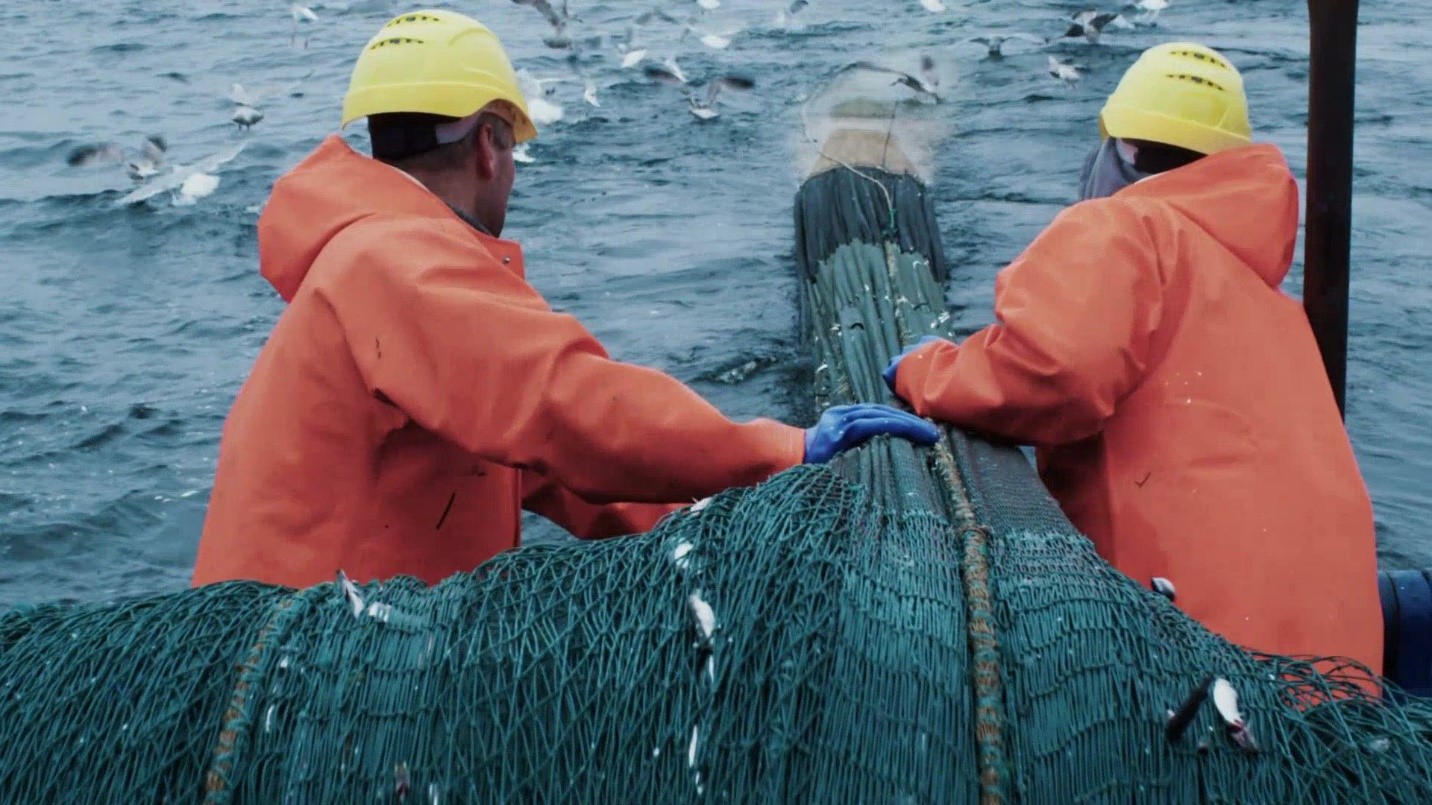Proposal for Geodyn Solutions: Integrated Shrimp and Fish Farming Facility
Comparative Proposal for Geodyn Solutions: Shrimp and Fish Farming Facility with Processing, Packaging, and Feed Manufacturing in the Dominican Republic vs. USAExecutive SummaryGeodyn Solutions proposes a $54 million integrated shrimp and fish farming facility with a processing and packaging center and an on-site feed manufacturing plant to supply project-specific nutritional needs. This proposal compares the project’s feasibility in the Dominican Republic (DR) versus top U.S. locations: Louisiana (Gulf Coast), Texas (Gulf Coast – Houston/Corpus Christi), Florida (Panhandle & Gulf Coast), Alabama (Mobile Region), and Georgia (Savannah Region). The analysis evaluates ROI, climate, logistics, incentives, tax benefits, workforce availability, and export potential, with each region producing 20,000 tons annually (16,000 tons shrimp, 4,000 tons fish) and manufacturing 5,000 tons of feed to meet project demands and reduce costs.Project OverviewObjectives
- Develop a 100-hectare facility with 1,000 greenhouses, a processing/packaging center, and a feed manufacturing plant.
- Produce 20,000 tons annually (16,000 tons shrimp, 4,000 tons fish, e.g., tilapia).
- Manufacture 5,000 tons of high-protein feed annually to support the project and potentially supply external markets.
- Achieve 80% shrimp and 85% fish survival rates using advanced greenhouse systems.
- Create 1,200 direct and 2,500 indirect jobs.
- Ensure sustainability with water recycling, waste-to-fertilizer systems, and energy-efficient feed production.
Technical Specifications
- Greenhouses: 1,000 units (1,000 m² each), $7,000/unit ($7M total).
- Production: 20 tons/greenhouse/year (20,000 tons total).
- Processing Center: Automated cleaning, manual peeling, vacuum packing/freezing for domestic (20%) and export (80%) markets; 20,000 tons/year capacity.
- Feed Manufacturing Plant:
- Capacity: 5,000 tons/year of high-protein shrimp and fish feed pellets (exceeding project’s 4,000-ton need to allow for surplus sales).
- Ingredients: Fish meal, soybean meal, wheat, vitamins/minerals, sourced locally or imported.
- Technology: Extrusion and pelletizing systems for species-specific formulations.
- Cost: $6M for equipment, $2M/year for raw materials and operations.
- Technology: Automated water quality monitoring, temperature control, oxygenation; energy-efficient feed production.
- Harvest Cycle: Shrimp (3–4 months), fish (6–8 months).
Comparative Analysis1. Dominican Republic (Samaná Peninsula)Advantages
- Climate: Tropical (25–30°C), ideal for shrimp and tilapia.
- Logistics: Santo Domingo and Puerto Plata ports for feed ingredient imports and seafood exports.
- Workforce: Abundant, low-cost labor ($2–$3/hour vs. $15–$20/hour in U.S.) for farming and feed plant.
- Land Costs: Low ($5,000–$10,000/hectare vs. $20,000–$50,000/hectare in U.S.).
- Feed Supply: Local soybean/wheat sourcing; fish meal imports via DR-CAFTA duty-free terms.
- Market: Strong domestic seafood demand; proximity to U.S./EU for exports.
Incentives and Tax Benefits
- Law 158-01: 20-year tax exemptions for agriculture projects in Samaná.
- Free Trade Zones: 100% exemption on income, import, and export taxes for feed and seafood.
- DR-CAFTA: Duty-free access to U.S. markets; reduced feed ingredient import costs.
- INFOTEP Training: Government-funded workforce programs for farming and feed production.
Financial Projections
- Investment: $54M ($18M infrastructure, $10M equipment, $9M startup, $9M processing, $6M feed plant, $2M contingency/R&D).
- Revenue:
- Seafood: $144M/year (16,000 tons shrimp at $8/kg, 4,000 tons fish at $4/kg).
- Feed Surplus: $0.5M/year (1,000 tons at $500/ton).
- Total: $144.5M/year.
- Operating Expenses: $33M/year (farming: $25M; feed plant: $2M; processing: $6M; lower labor costs).
- Net Profit: $111.5M/year (77% margin).
- ROI: ($111.5M / $54M) × 100 = 206% annually.
- Breakeven: 3–4 years.
Challenges
- Regulatory Delays: Permitting (6–12 months); mitigated by Free Trade Zone partnerships.
- Infrastructure: Rural logistics require investment; offset by port proximity.
- Disease Risk: Greenhouse isolation and biosecurity for shrimp/fish.
2. Louisiana (Gulf Coast)Advantages
- Climate: Warm, humid, suitable for shrimp and catfish.
- Logistics: New Orleans/Baton Rouge ports for feed imports and seafood exports.
- Workforce: Skilled aquaculture/feed production labor; 15,000 shrimp industry jobs.
- Feed Supply: Access to U.S. soybean/fish meal markets; established feed ecosystem.
- Market: $1.3B shrimp industry; high domestic demand.
Incentives and Tax Benefits
- Louisiana Quality Jobs Program: 6% payroll tax rebates for farming/feed plant.
- Industrial Tax Exemption: 80% property tax abatement for 10 years.
- Workforce Training Grants: State-funded for feed manufacturing and aquaculture.
- USDA Grants: Support for aquaculture and feed production.
Financial Projections
- Investment: $54M (same breakdown).
- Revenue: $144.5M/year (seafood: $144M; feed surplus: $0.5M).
- Operating Expenses: $44M/year (farming: $30M; feed plant: $3M; processing: $11M; higher labor/energy).
- Net Profit: $100.5M/year (70% margin).
- ROI: ($100.5M / $54M) × 100 = 186% annually.
- Breakeven: 4–5 years.
Challenges
- Competition: 94% of U.S. shrimp from imports.
- Costs: Higher labor ($15–$20/hour) and energy for feed production.
- Tariffs: Limited protection against cheap imports.
3. Texas (Gulf Coast – Houston/Corpus Christi)Advantages
- Climate: Year-round warm, ideal for shrimp and tilapia.
- Logistics: Houston Port for feed imports/seafood exports; robust infrastructure.
- Workforce: Skilled labor; history of shrimp and feed production.
- Feed Supply: Strong U.S. agricultural base for soybean/fish meal.
- Market: Large domestic market; exports to Asia/EU.
Incentives and Tax Benefits
- Texas Enterprise Fund: Grants for job creation in farming/feed plant.
- Aquaculture Permit Streamlining: Faster approvals.
- Property Tax Abatements: Local incentives for feed and processing facilities.
- Workforce Training: State-funded programs.
Financial Projections
- Investment: $54M.
- Revenue: $144.5M/year.
- Operating Expenses: $42M/year (farming: $28M; feed plant: $3M; processing: $11M).
- Net Profit: $102.5M/year (71% margin).
- ROI: ($102.5M / $54M) × 100 = 190% annually.
- Breakeven: 4–5 years.
Challenges
- Imports: Low-cost competition from India/Ecuador.
- Land Costs: Moderate ($20,000/hectare).
- Regulations: Stricter water discharge rules for feed plant.
4. Florida (Panhandle & Gulf Coast)Advantages
- Climate: Warm, suitable for shrimp and tilapia.
- Logistics: Miami Port for exports; strong domestic distribution.
- Workforce: Experienced seafood/feed industry labor.
- Feed Supply: Access to U.S. agricultural inputs.
- Market: High local demand; export to Caribbean/EU.
Incentives and Tax Benefits
- Florida Job Growth Grant Fund: Grants for infrastructure/training.
- Aquaculture Development Programs: State support for feed/farming.
- Tax Incentives: Job creation credits.
- NOAA/USDA Grants: Funding for feed and seafood production.
Financial Projections
- Investment: $54M.
- Revenue: $144.5M/year.
- Operating Expenses: $45M/year (farming: $30M; feed plant: $3M; processing: $12M; high labor/land).
- Net Profit: $99.5M/year (69% margin).
- ROI: ($99.5M / $54M) × 100 = 184% annually.
- Breakeven: 4–5 years.
Challenges
- Land Costs: High ($30,000–$50,000/hectare).
- Hurricanes: Seasonal infrastructure risk.
- Imports: 93% of U.S. market.
5. Alabama (Mobile Region)Advantages
- Climate: Warm, suitable for shrimp and catfish.
- Logistics: Mobile Port for feed imports/seafood exports.
- Workforce: Growing labor pool; lower wages ($12–$15/hour).
- Land Costs: Low ($10,000–$15,000/hectare).
- Feed Supply: Access to U.S. soybean/fish meal; emerging feed sector.
Incentives and Tax Benefits
- Alabama Job Creation Tax Credits: 3% of wages.
- Aquaculture Best Management Practices: Technical support.
- Rural Development Grants: USDA funding for feed/farming.
- Property Tax Abatements: Local incentives.
Financial Projections
- Investment: $54M.
- Revenue: $144.5M/year.
- Operating Expenses: $39M/year (farming: $25M; feed plant: $3M; processing: $11M; low costs).
- Net Profit: $105.5M/year (73% margin).
- ROI: ($105.5M / $54M) × 100 = 195% annually.
- Breakeven: 3–4 years.
Challenges
- Market Access: Smaller domestic market.
- Infrastructure: Less developed than Texas/Louisiana.
- Imports: Same as other U.S. regions.
6. Georgia (Savannah Region)Advantages
- Climate: Moderate, year-round operations with greenhouses.
- Logistics: Port of Savannah for feed imports/seafood exports.
- Workforce: Available labor; moderate wages ($12–$15/hour).
- Land Costs: Low ($10,000–$20,000/hectare).
- Feed Supply: Access to U.S. agricultural inputs.
Incentives and Tax Benefits
- Georgia Business Expansion Support Act: Job tax credits up to $4,000/employee.
- Aquaculture Development Programs: Support for feed/farming.
- Port Tax Credits: $1,250/TEU for exporters.
- Workforce Training: State-funded programs.
Financial Projections
- Investment: $54M.
- Revenue: $144.5M/year.
- Operating Expenses: $41M/year (farming: $27M; feed plant: $3M; processing: $11M).
- Net Profit: $103.5M/year (72% margin).
- ROI: ($103.5M / $54M) × 100 = 192% annually.
- Breakeven: 4–5 years.
Challenges
- Climate: Cooler, requiring greenhouse heating.
- Ecosystem: Less developed aquaculture/feed sector.
- Imports: Market challenges.
Summary Comparison
Criteria | DR | Louisiana | Texas | Florida | Alabama | Georgia |
|---|---|---|---|---|---|---|
ROI (%/year) | 206 | 186 | 190 | 184 | 195 | 192 |
Climate |    |    |    |    |    |   |
Export Port Access |



